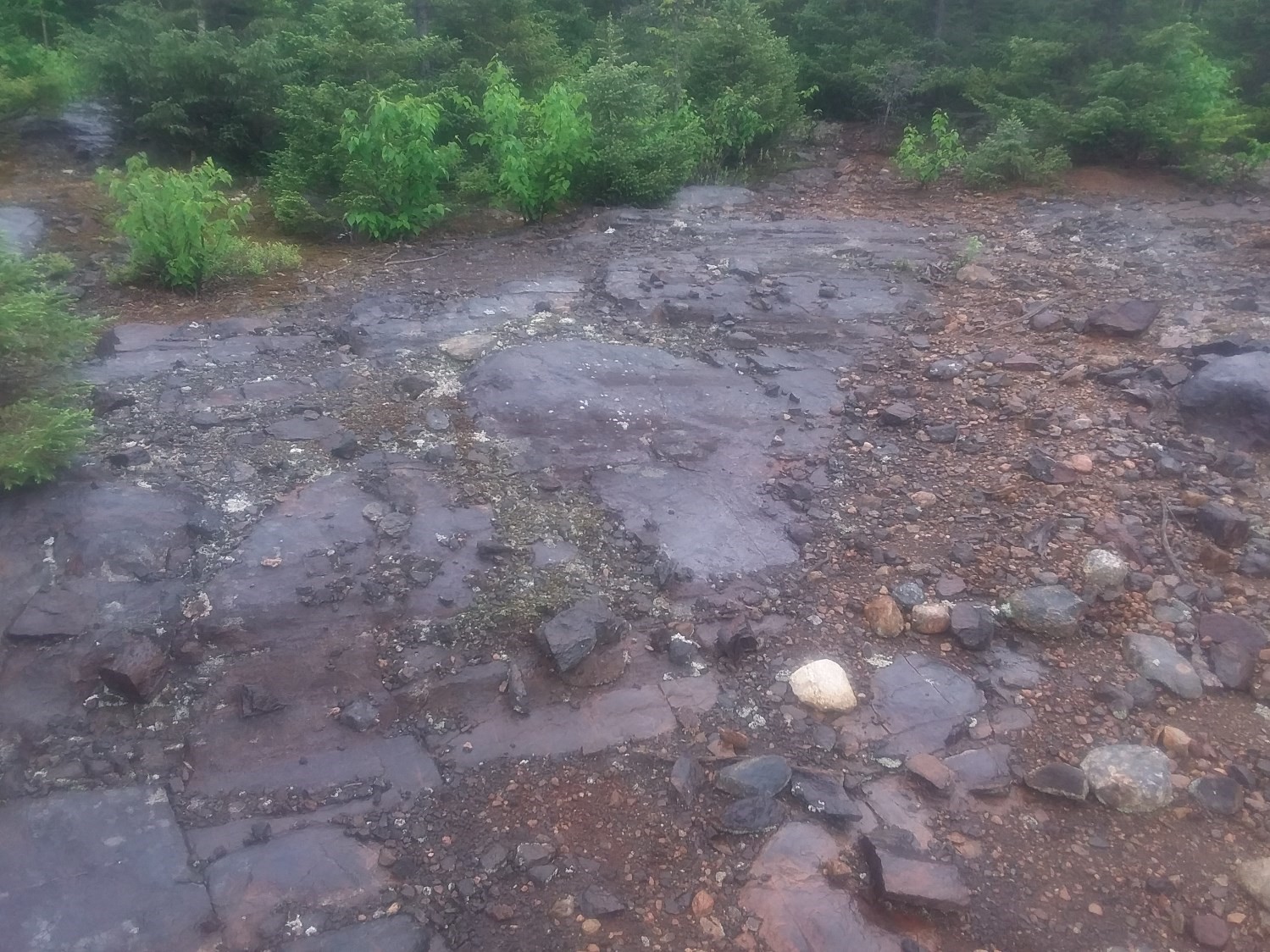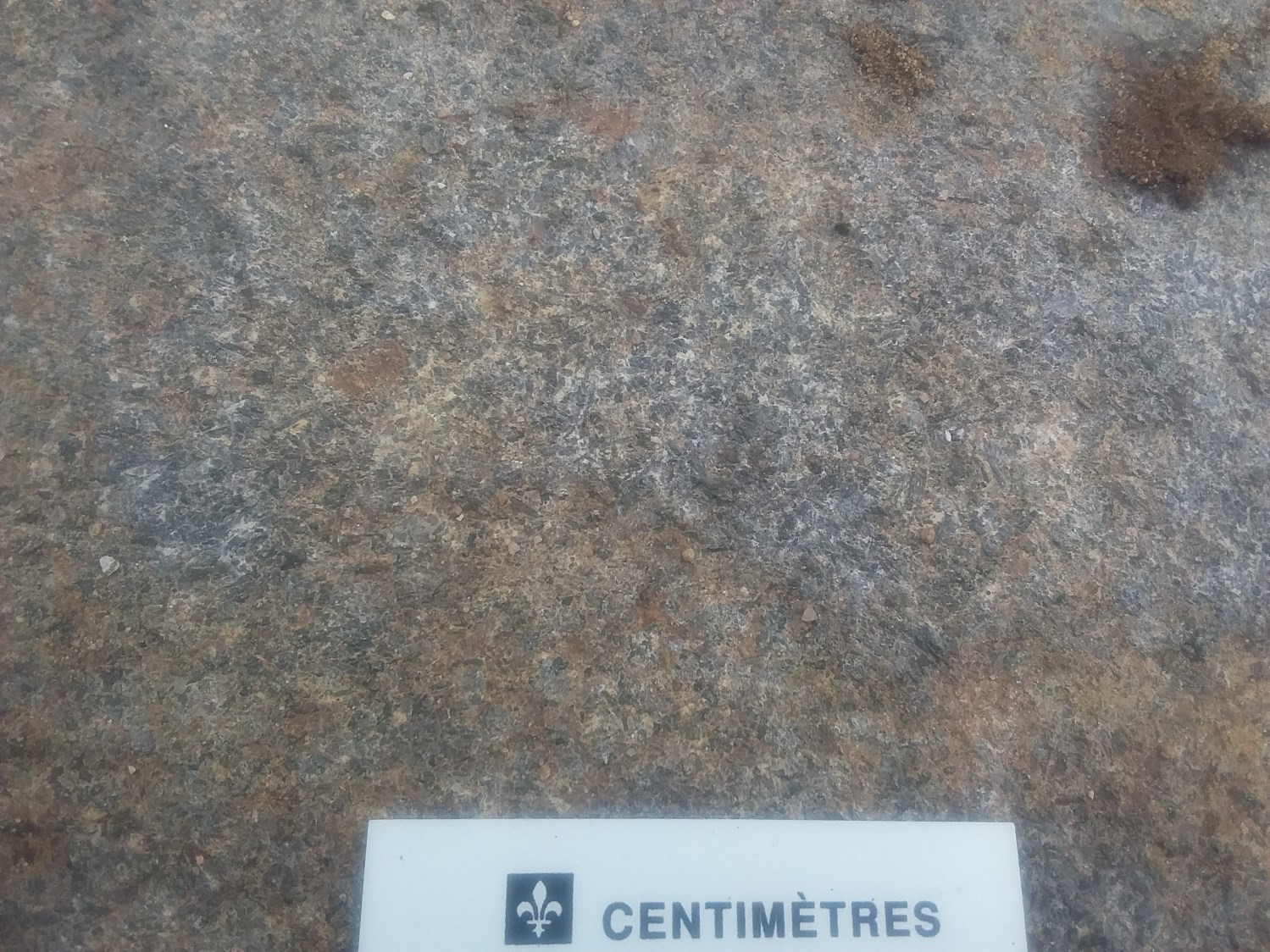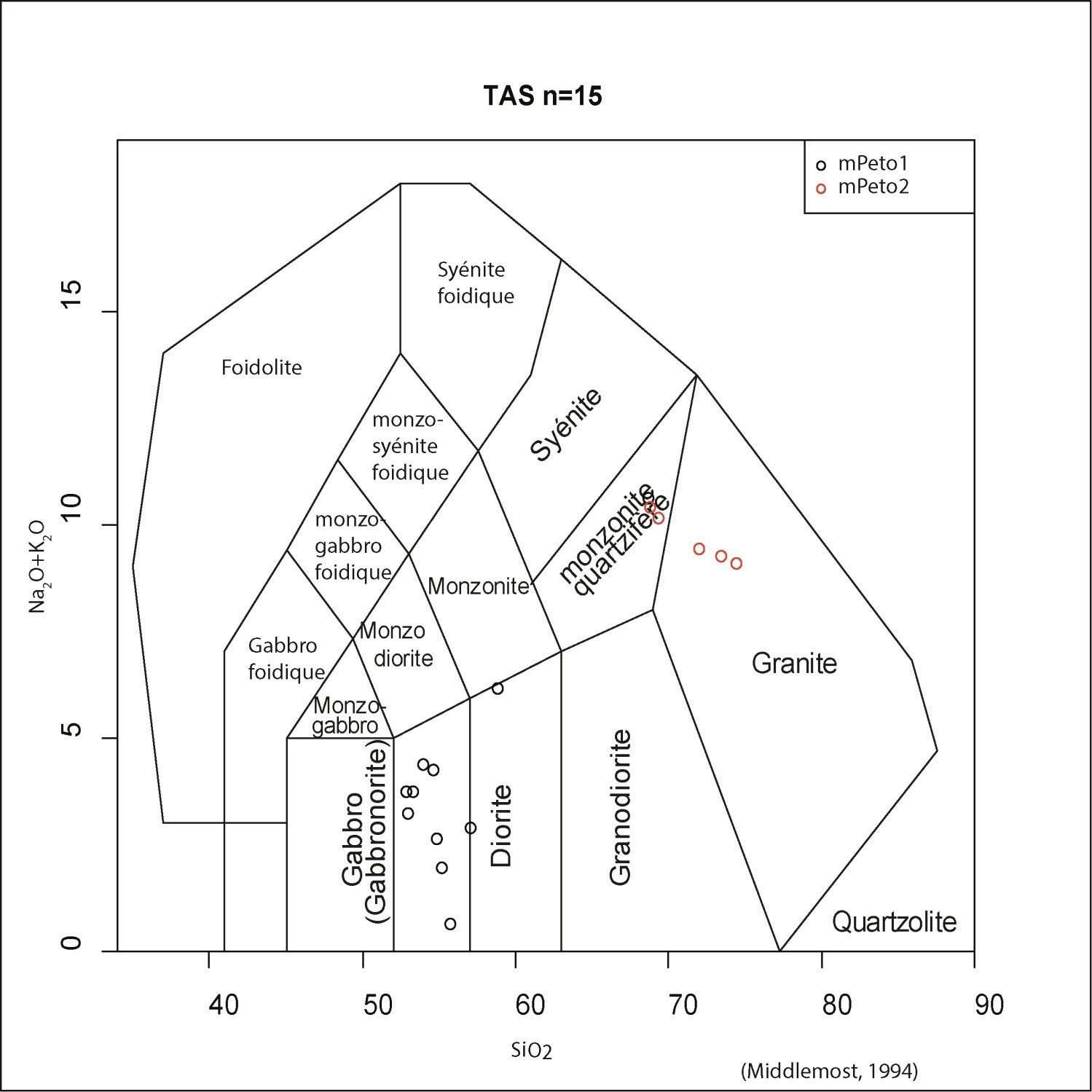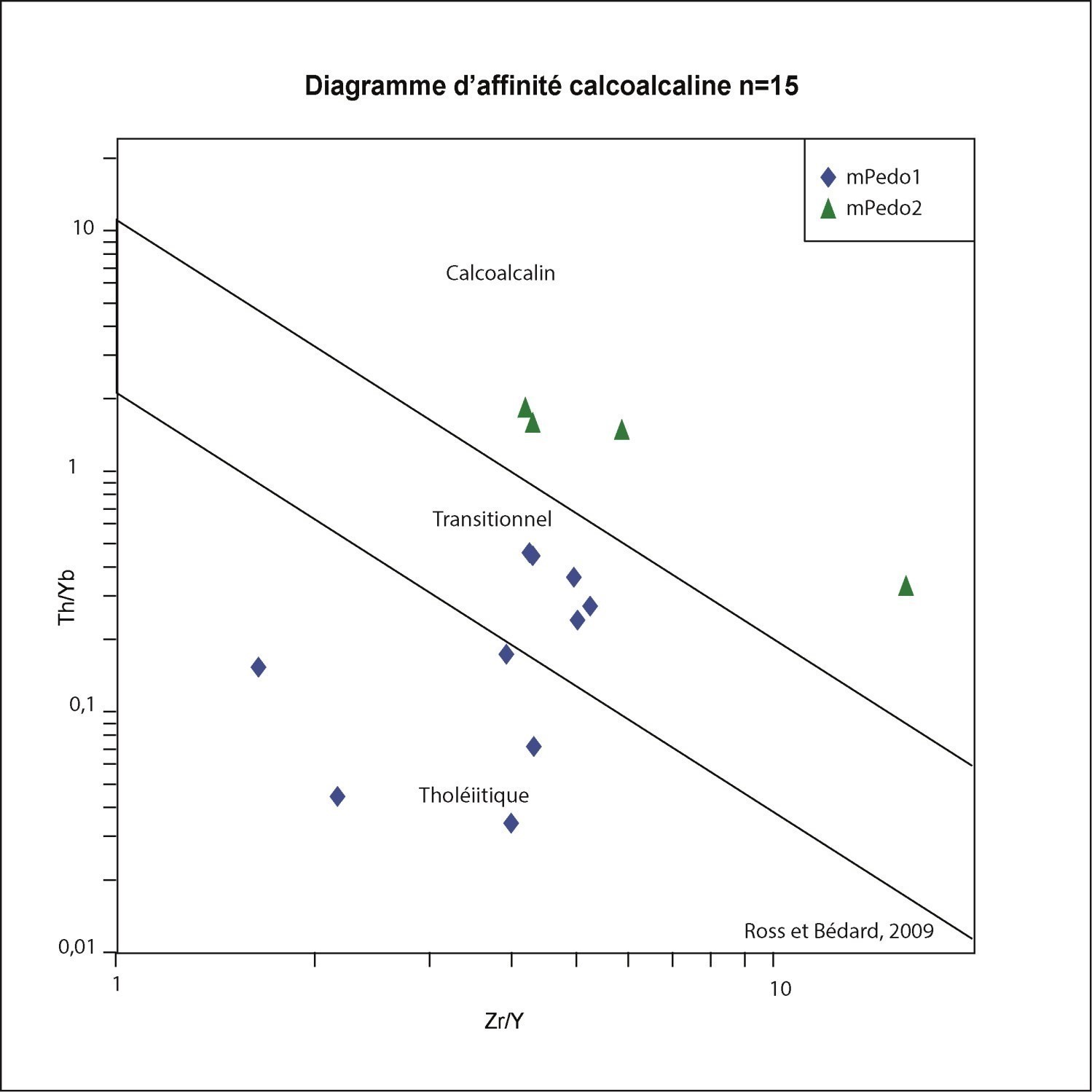
Last modified:
Translation of original French
| Author: | Perreault, 1992 |
| Age: | Mesoproterozoic |
| Reference section: | Syenite outcrop 17-GC-1055 |
| Type area: | Haut-Saint-Maurice (NTS sheet 31P) |
| Geological province: | Grenville Province |
| Geological subdivision: | Allochton |
| Lithology: | Mafic-ultramafic intrusive rocks |
| Type: | Lithodemic |
| Rank: | Suite |
| Status: | Formal |
| Use: | Active |
None
Background
The Étoile Suite was introduced by Perreault (1992) during mapping of NTS sheet 31P16 (Grand lac Bostonnais). This author had defined it as a mafic intrusion of gabbroic composition (mPeto1 and mPeto2), the centre of which is anorthosite (mPeto3). During mapping of the Borgia Lake region, Moukhsil and Côté (2018) observed felsic, intermediate, mafic and ultramafic facies in this suite and grouped them into two units, mPeto1 and mPeto2.
Description
Étoile Suite 1 (mPeto1): Anorthosite, Gabbronorite, Troctolite, Pyroxenite
Unit mPeto1 consists of anorthosite, troctolite and pyroxenite. It is characterized by a low magnetic susceptibility. The anorthosite is black to grey, fine to coarse grained, and its magmatic texture indicates weak plagioclase recrystallization. A small isolated intrusion of this unit, located north of Lake du Corbeau (south portion of sheet 31P16, outcrop 17-AM-038), is predominantly composed of high magnetic susceptibility gabbronorite. The latter contains clusters of leuconorite and norite xenoliths. Gabbronorite is fine grained and consists of clinopyroxene, plagioclase, magnetite and traces of ilmenite and sulphides (pyrite, pyrrhotite). Locally, a brecciated appearance (leuconorite and norite xenolith clusters) is also observed in gabbronorite. Magnetite and ilmenite clusters are observed in places.
Troctolite is purple-grey, medium or coarse grained, leucocratic, massive or foliated and coronitic. It contains 15 to 35% ferromagnesian minerals. Under the microscope, rims are usually very spectacular. From the centre to the periphery, it consists of olivine (locally altered to iddingsite), lamellar orthopyroxene and a symplectitic assemblage of amphibole and greenish spinel in contact with tabular plagioclase. It is a reaction rim between olivine or orthopyroxene and plagioclase, likely related to changes in pressure and temperature conditions during troctolite intrusion. In some cases, the rim centre no longer contains olivine, which is replaced by an unidentified alteration mineral. Pyroxenite is coarse grained and is composed of >85% pyroxene (clinopyroxene and orthopyroxene), <10% plagioclase, ~5% hornblende and reddish brown biotite. The latter also occurs as inclusions in hornblende. It is noted that the rock is weakly to highly magnetic. Locally, pyroxenite is cut by anorthosite dykes 30 to 40 cm thick.
Étoile Suite 2 (mPeto2): Granite with or without Orthopyroxene, Syenite, Mangerite
Unit mPeto2 unit, which is highly magnetic, consists of granite, syenogranite or syenite, with or without orthopyroxene (locally uralitized), syenite with or without hypersthene and mangerite. Granite is medium to coarse grained, massive (locally augen) and has high magnetic susceptibility. It contains quartz with undulatory extinction, perthitic K-feldspar (microcline, ≤2 cm long), altered (sericitized) plagioclase laths, hornblende, biotite, allanite, myrmekite and traces of apatite and zircon. Syenite is usually greyish or pink and has megacristic texture with pinkish and perthitic K-feldspar. Granite also contains clinopyroxene and quartz zones of varying size.
From a geochemical perspective, the Étoile Suite is ultramafic to felsic with SiO2 contents ranging from 46.67 to 71.27%. On the TAS classification diagram (Total Alkali Silica of Middlemost, 1994), these rocks form a sequence in the compositional field of gabbros up to that of granites. Unit mPeto1 unit is tholeiitic to transitional, while unit mPeto2 is calc-alkaline.
Thickness and Distribution
The majority of the Étoile Suite is visible in NTS sheet 31P16. It consists of a 168 km2 batholith, the centre of which is occupied by the mafic to ultramafic unit (mPeto1). On the periphery of the intrusive body are mainly highly magnetic felsic to intermediate rocks (mPeto2).
Dating
None.
Stratigraphic Relationship(s)
The Étoile Suite intrudes into the La Bostonnais Complex as batholiths or metric dykes.
Paleontology
Does not apply.
References
| Author(s) | Title | Year of Publication | Hyperlink (EXAMINE or Other) |
|---|---|---|---|
| MIDDLEMOST, E.A.K. | Naming materials in the magma/igneous rock system. Earth Science Reviews, volume 37, pages 215–224. | 1994 | Source |
| MOUKHSIL, A. – CÔTÉ, G. | Géologie de la région du lac Borgia, Province de Grenville, nord de La Tuque, régions de la Mauricie et du Saguenay – Lac-Saint-Jean, Québec, Canada. Ministère de l’Énergie et des Ressources naturelles, Québec. | 2018 | Bulletin géologiQUE |
| PERREAULT, S. | Géologie du Grand lac Bostonnais. Ministère des Ressources naturelles et de la Faune, 1 carte à l’échelle 1/50 000. | 1992 | CG SIGEOM31P |
| ROSS, P.-S. – BÉDARD, J.H. | Magmatic affinity of modern and ancient subalkaline volcanic rocks determined from trace-element discriminant diagrams. Journal Canadien des Sciences de la Terre, volume 46, pages 823-839. | 2009 | Source |





